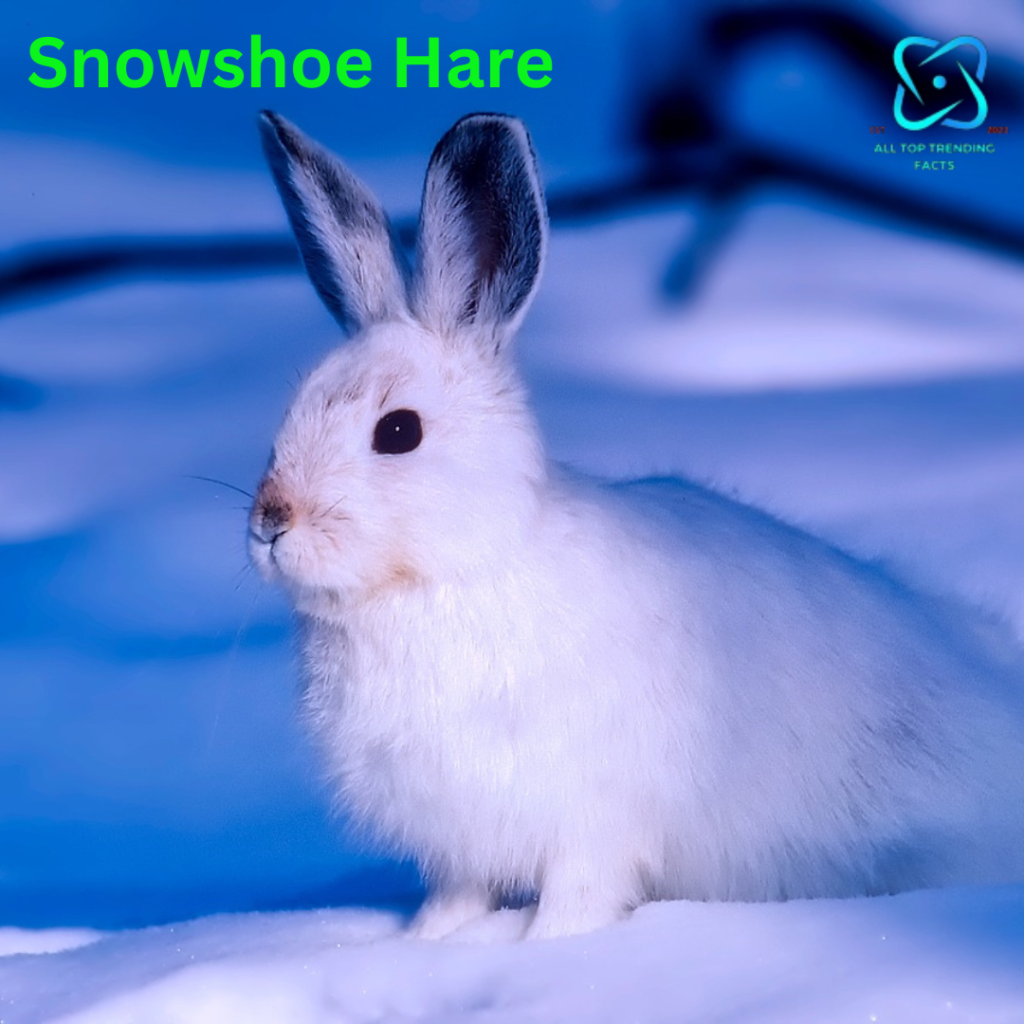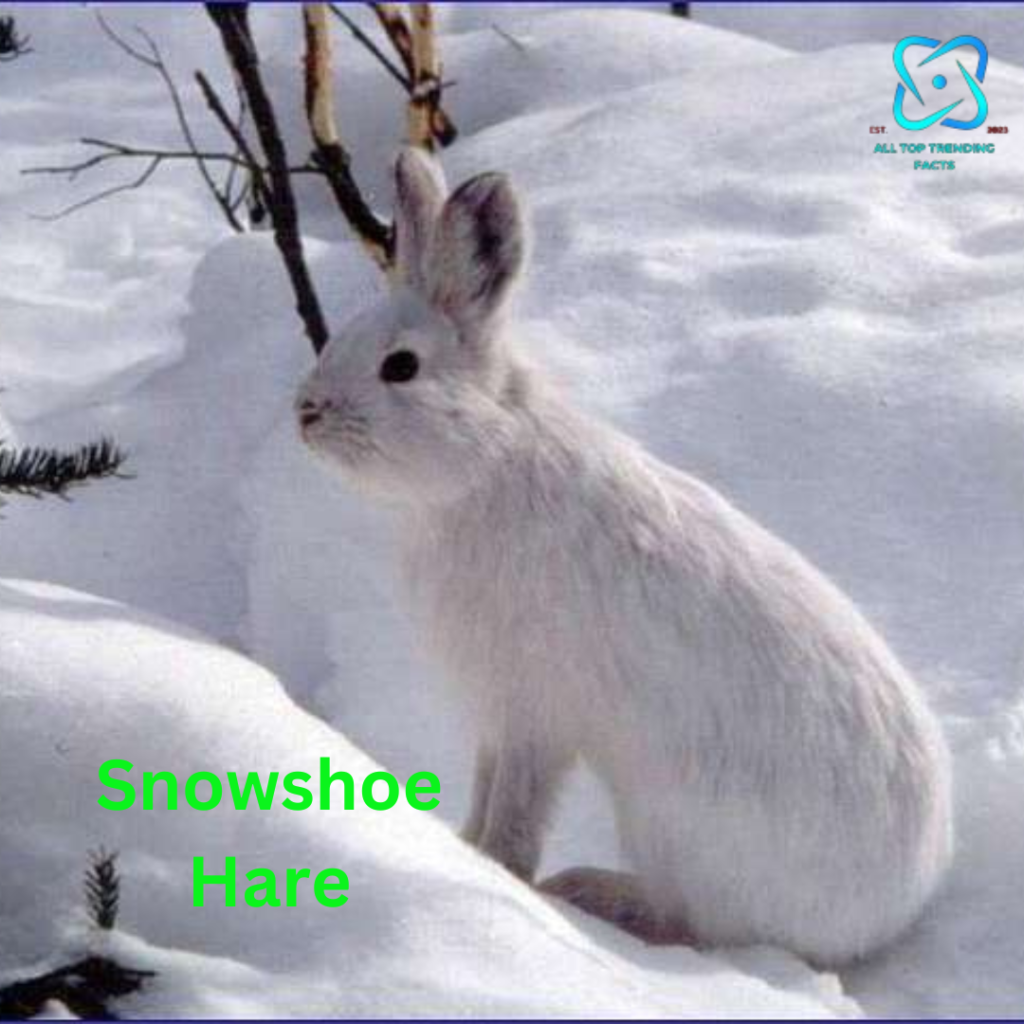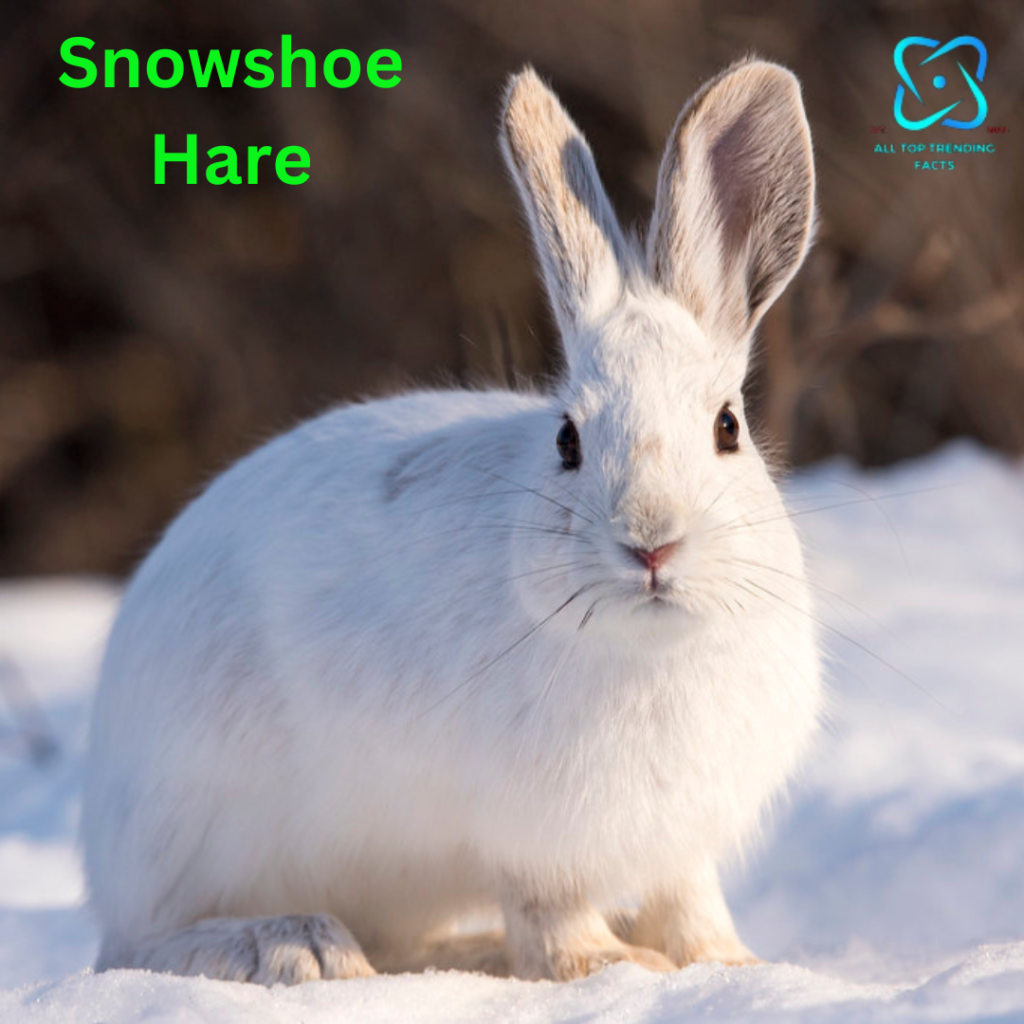Snowshoe hares live throughout the boreal, or northern, forest. As an important prey species for a wide variety of predators, the population size and reproductive success of many predators cycles with the abundance of hare.

Boreal, or northern, forests are home to snowshoe hares. The abundance of hares is correlated with the size of many predators’ populations and their ability to reproduce, making them an essential prey species for a wide range of predators.
Snowshoe hares are year-round residents of North America’s boreal woods. Their enormous, stiff-haired hind feet, which resemble a snowshoe and sustain their weight on the snow’s surface, are the source of their unusual moniker.
Their fur colour varies with the seasons, going from brown in the summer to nearly pure white in the winter, thus they blend in nicely with their surroundings. Two times a year, variations in day duration cause the coat to gradually shed and the guard hairs to grow back. They live in spruce forests and shrubby environments in riparian areas found in national parks in interior Alaska. Snowshoe hares are the main herbivore in a lot of the boreal forest.
Populations of snowshoe hares cycle every 8 to 11 years, and densities can vary by 5 to 25 times throughout these cycles. Scientists disagree on what causes the snowshoe hares’ cyclical oscillations. Numerous theories have been put forth by scientists to explain the variations in population numbers that cause these cycles. These theories typically focus on patterns of predation, food scarcity, and the relationships between predation and food supply. According to recent research conducted in Kluane National Park and Reserve in Yukon, Canada, snowshoe hare cyclic oscillations are most likely the consequence of interactions between food sources and predators.
Snowshoe Hare Food and Ecology

Snowshoe hares consume a variety of foods. They consume new growth from woody plants and herbaceous plants in the summer. They consume bark, buds, and twigs in the winter. Frequently leaving clear browse-lines (sometimes called “hare lines”), snowshoe hares feed extensively on plants. To get all the nutrients from their meal, hares will also re-ingest their excrement.
Procreation

In spring (March and April), the first mating of the year takes place, and about 35 days after mating, a litter of two to four young (leverets) is born. A year, hares give birth to two or three litters of young, and the females mate shortly after. Throughout the year, both males and females have several partners. Adolescent hares are mobile shortly after birth, and snowshoe hares typically start breeding a year after that. The rates of reproduction differ by year and by place.
surviving
Hares have evolved successfully to avoid becoming prey to predators. They can hear quite well, and they frequently stop dead in their tracks when they spot a predator. This usually works well to ward off predators in addition to their colour camouflage.
little snowshoe hare.
The environment that surrounds hares is significantly impacted by them, including the flora, predators, and other omnivores and herbivores that share the same habitats. Hares graze extensively on plants. Surfing has an impact on plant growth and encourages the production of secondary chemicals that render plants indigestible to omnivores like hares.
There is ample evidence of the coexistence of snowshoe hares and their year-round predators, such as northern goshawks, great-horned owls, and lynx. Snowshoe hares provide a food source for golden eagles and other predators, including these ones, early in the breeding season. The number of hares and the success of their reproduction are correlated across the boreal forest.

“Hello Everyone” Myself Joydip DN, and I Live in Sylhet And I am a Seasoned Digital Marketer, Accomplished Content Writer, Experienced Blogger And Combines A Wealth of Experience In Online Marketing Trained From Freelancer Lab Academy, With A Strong Linguistic Proficiency, Evident In My Impressive IELTS Band Score. Holding An, MBA With A Major In Management Information System(MIS) From Leading University. I Am(Joydip) Seamlessly Integrates Strategic Business Insights With Technological Acumen To Deliver Organic And Impactful And Results-Driven Content In The Dynamic Digital Landscape.”





